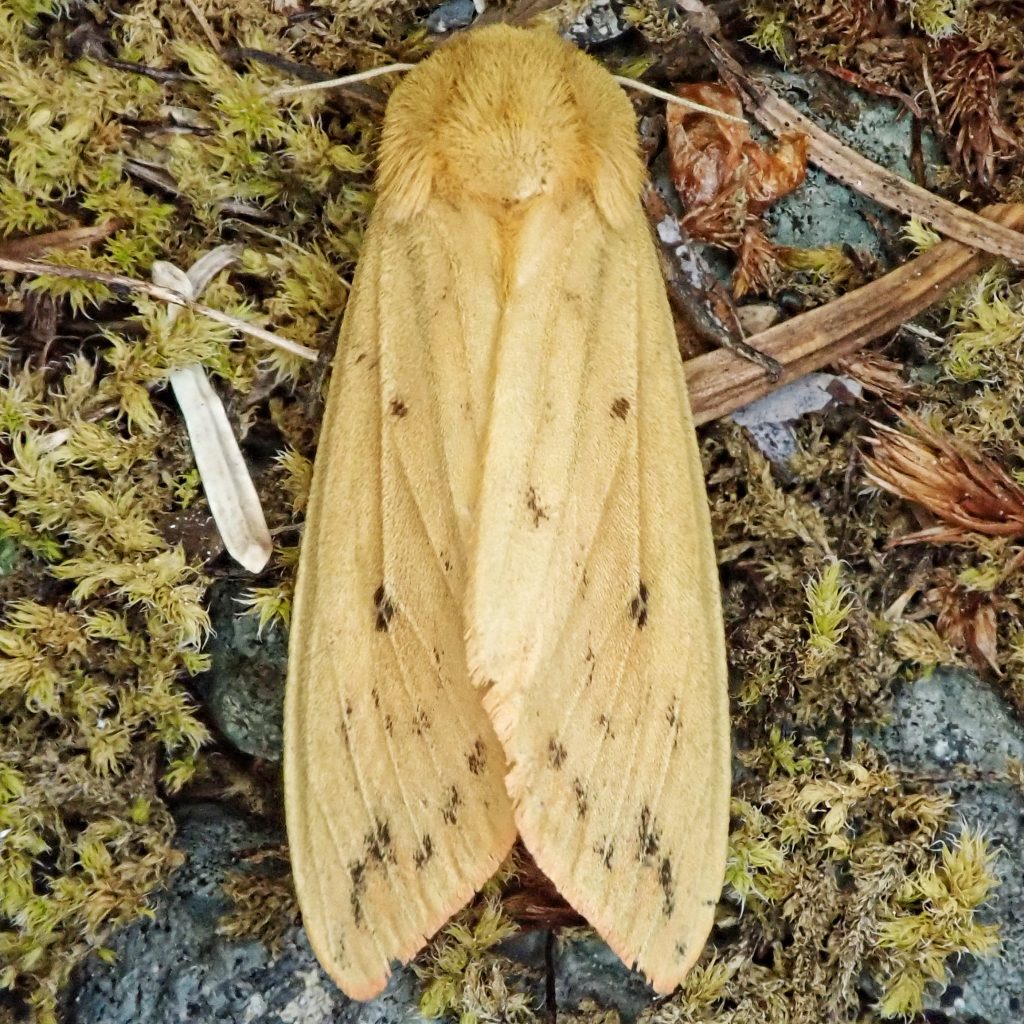
This beautiful erebid moth is the only member of the genus Pyrrharctia. It’s larvae are the common banded wooly bear caterpillars, known to kids and bug enthusiasts of all ages. There is a popular myth that the proportion of reddish brown central band to black ends can predict the severity of the coming winter, with a larger reddish portion denoting a milder winter. But this is more-or-less fallacious, because the central band lengthens with the age and feeding success of the caterpillar. However it does appear that wetter conditions may produce longer black ends, and may also force the caterpillar into hibernation at a younger age, which would result in a shorter central section. This might foretell an earlier start to winter, though not necessarily a more severe one.
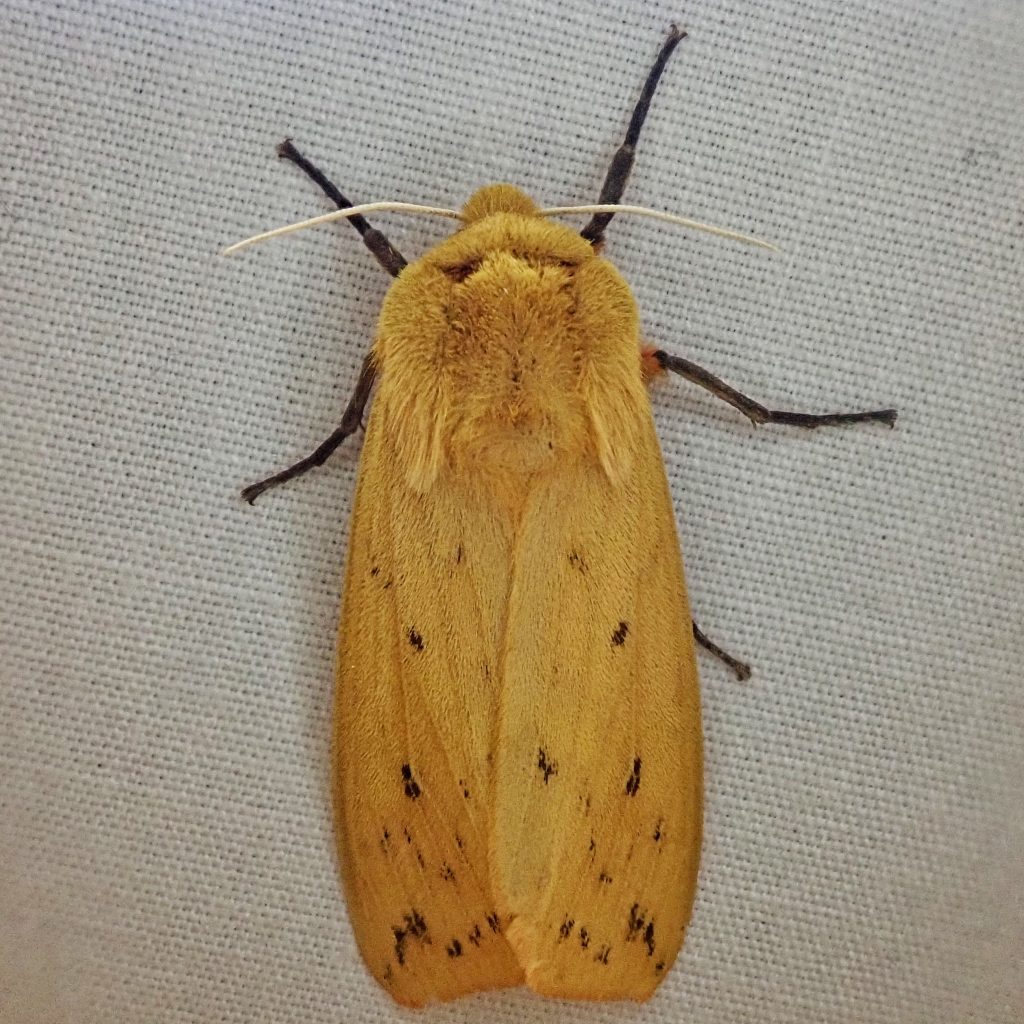
But there are other very fascinating things about these larvae. One is that since they overwinter as larvae in diapause, rather than in a pupal state, and exist in a hibernaculum in the relatively stable, but often very cold, environment between the leaf litter and the ground, they produce glycerol, a cryoprotectant that slows down freezing by allowing their bodily fluids to supercool without forming ice crystals. This is called ‘freeze avoidance’, and is actually a relatively common adaptation in the insect world.
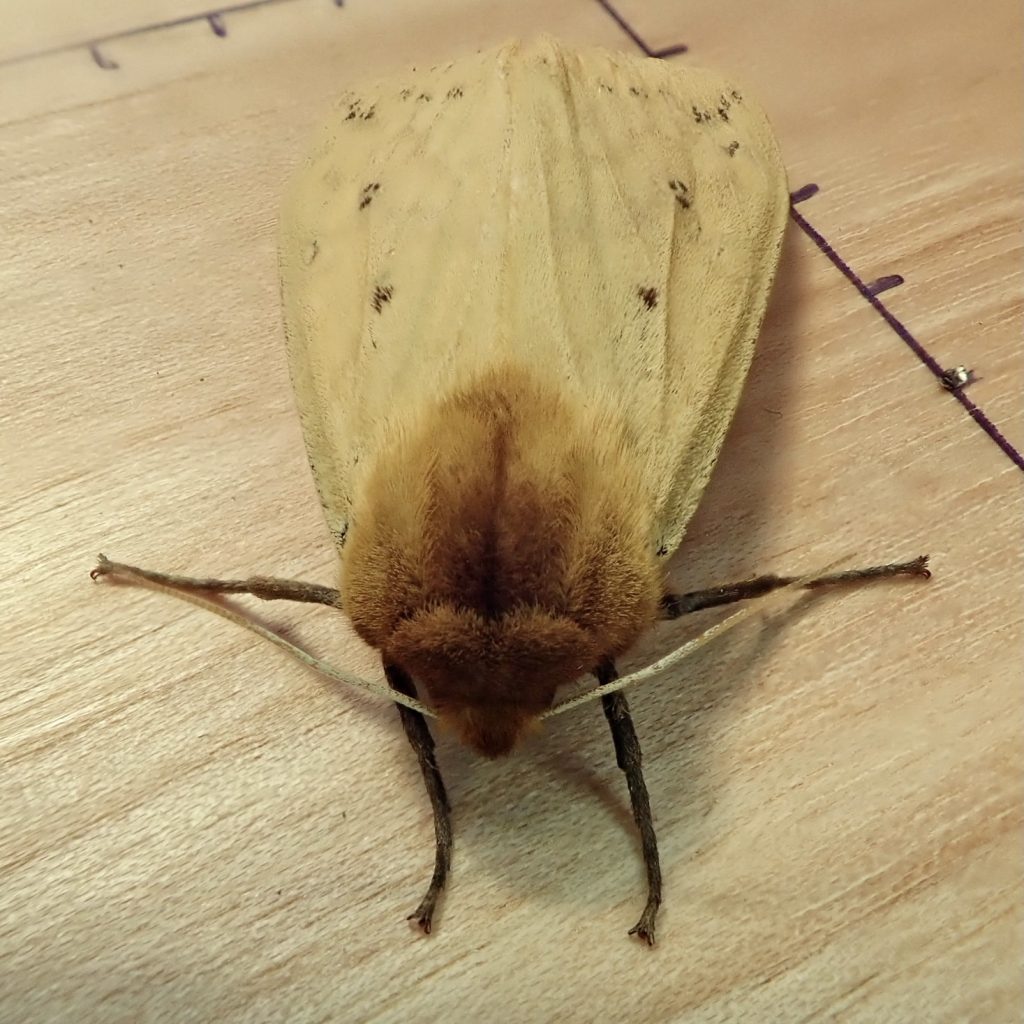
But it can be negated by extremely low temperatures. Pyrrharctia isabella works around this by being freeze tolerant. To accomplish this they allow ice crystals to form, but at higher temperatures when they grow more slowly, so that the cell walls can accommodate them without injury, and the interior of the cell remains unaffected due to a high glycerol hemolymph. They can actually freeze almost solid, and still revive when temperatures rise!
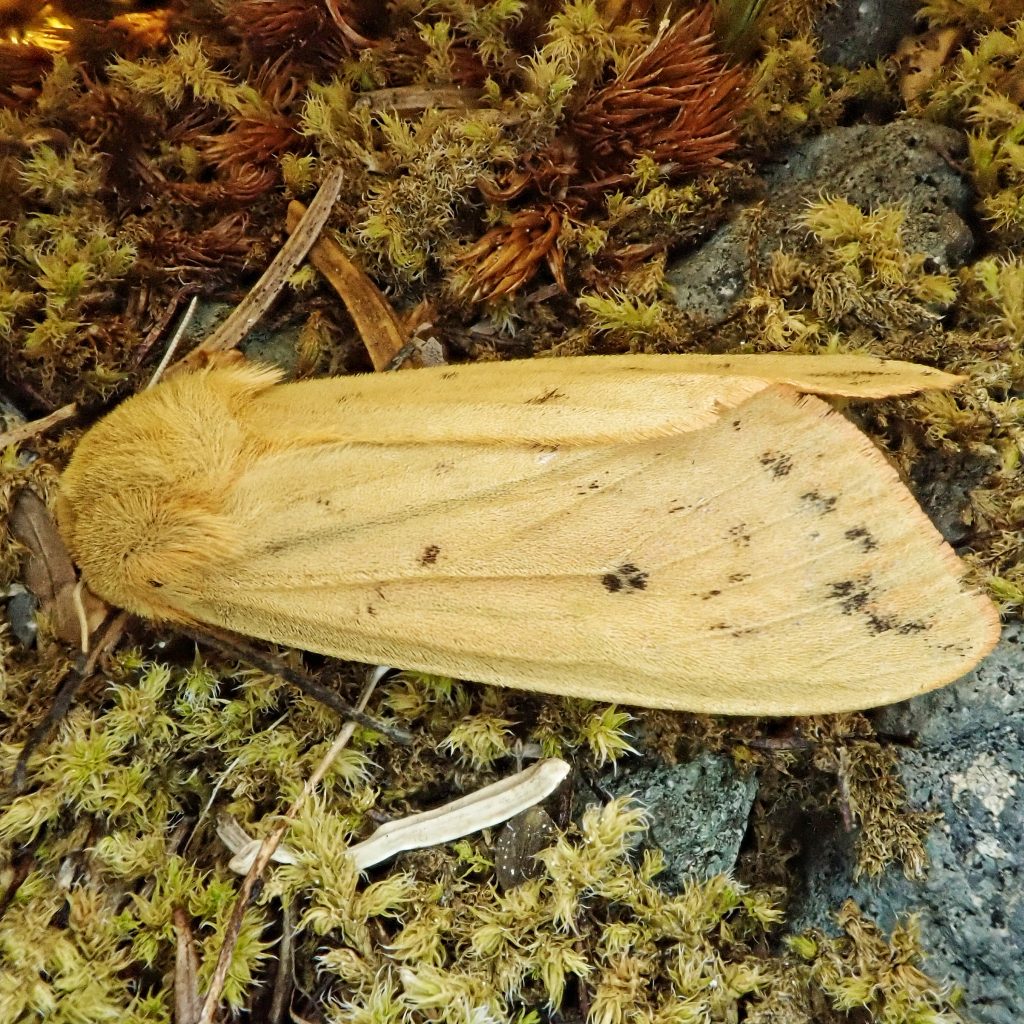
And it is likely (though not as yet documented in this species) that, like certain closely related Grammia spp., they will selectively ingest plants containing pyrrolizidine alkaloids (like groundsels, hounds tongue, coltsfoot, etc) when they are infected by the parasitoid larvae of wasps and tachinid flies. These alkaloids have no effect on the moth larvae, but are toxic to the parasitoid larvae. They are also lower in nutritional value, which is why only infected moths engage in eating them. This sort of self medicating, adaptive plasticity, is as yet unknown in the insect world outside of the tiger moths.
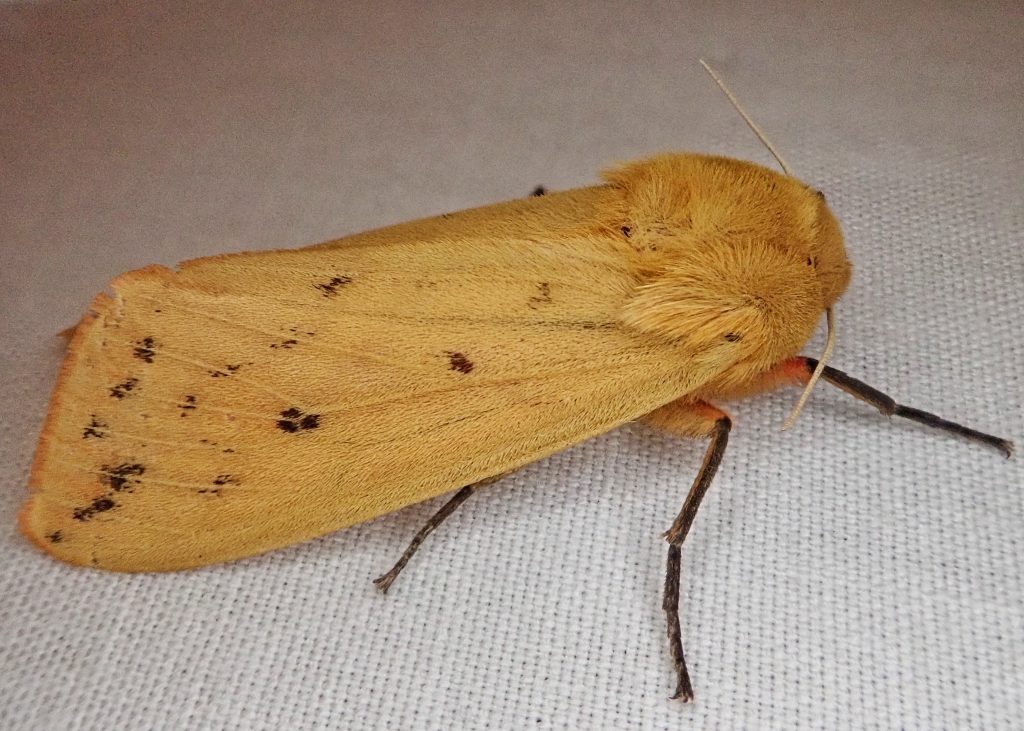
I might not have found this particular moth on our trip to the Ridge, without the help of William Sondergaard, my friend Craig’s grandson. It blended into some low mosses for me, due to my colorblindness, but William spotted it right away on the ground near the base of the sheet. I’ve now found Isabella Tiger Moths in elevations from sea level to almost 4,000’, and in habitats as diverse as floodplain bottomland, oak scrub, mixed deciduous and coniferous low elevation forest, and subalpine fir dominated forest. Which is exactly the sort of highly adaptable niche exploitation one would expect for a creature found nearly coast to coast in northern North America.
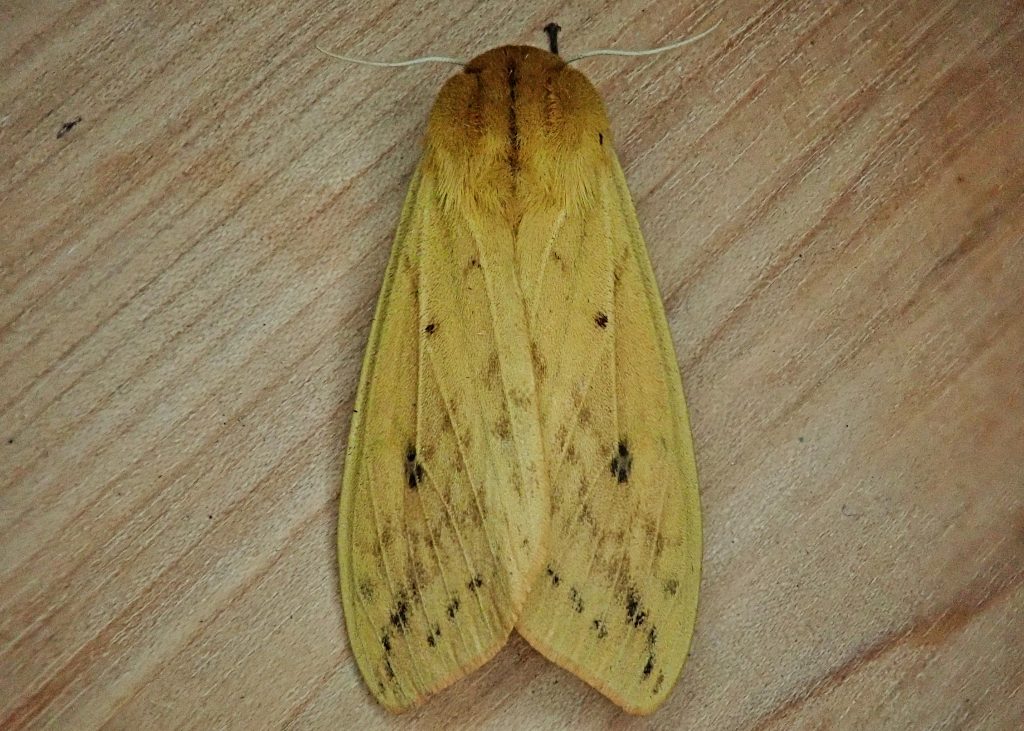
Description-Large (forewing length 22-26mm) orange to brownish orange moth with black speckling at mid fw, and a line of black dots near the fw apex; hindwing lighter orange; legs black.
Similar species-Nothing else in our region has this combination of orange coloring, large size, and small black dots.
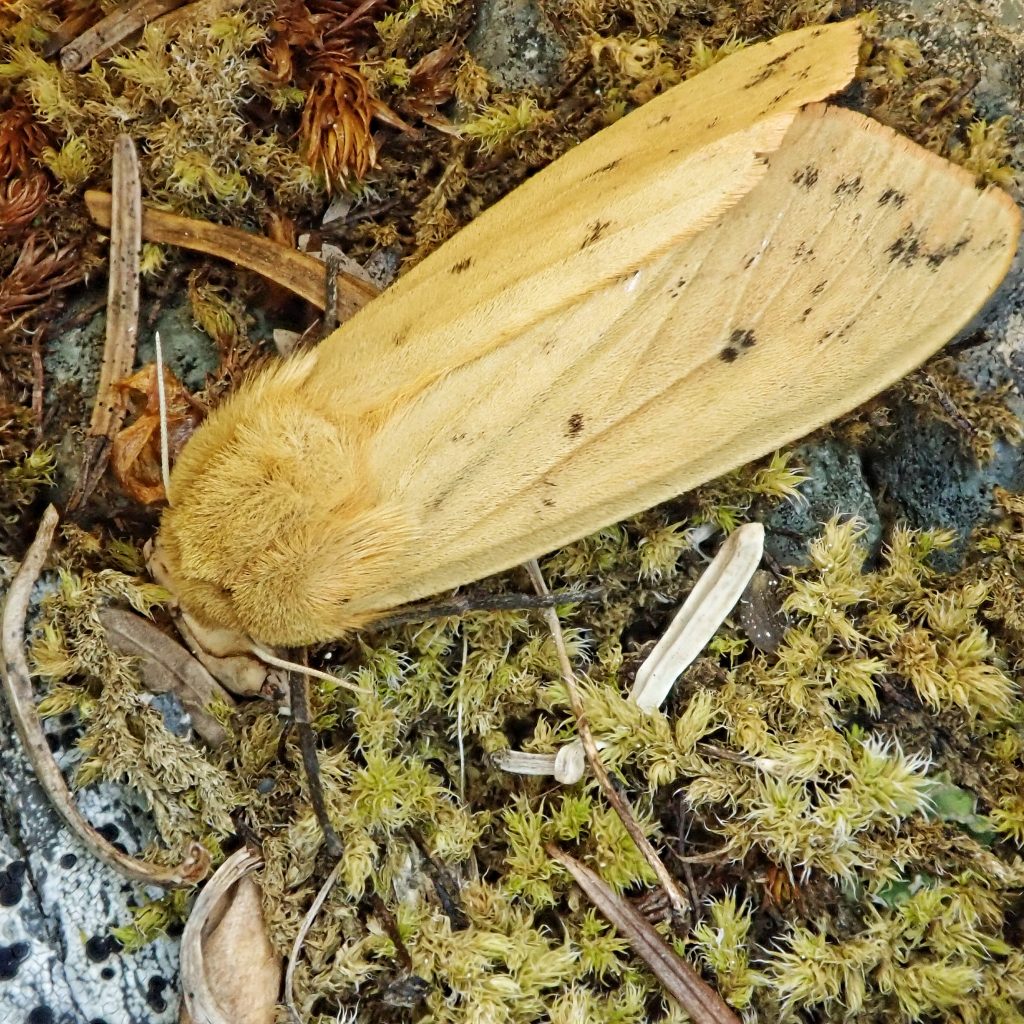
Habitat-Moist to mesic forests and mixed woodlands, coastal grasslands and wet meadows, up to 5,000’ elevation.
Range-Northern North America; region wide in appropriate habitat; absent from the most arid parts of the interior.
Eats-Larval hosts include a wide variety of grasses and leafy vegetation; larvae will resort to cannibalism in the absence of other food sources; adults do not eat.
Eaten by-Larvae and adults are preyed upon by insectivores of all classes, including birds, reptiles, amphibians, mammals, insects, and arachnids.
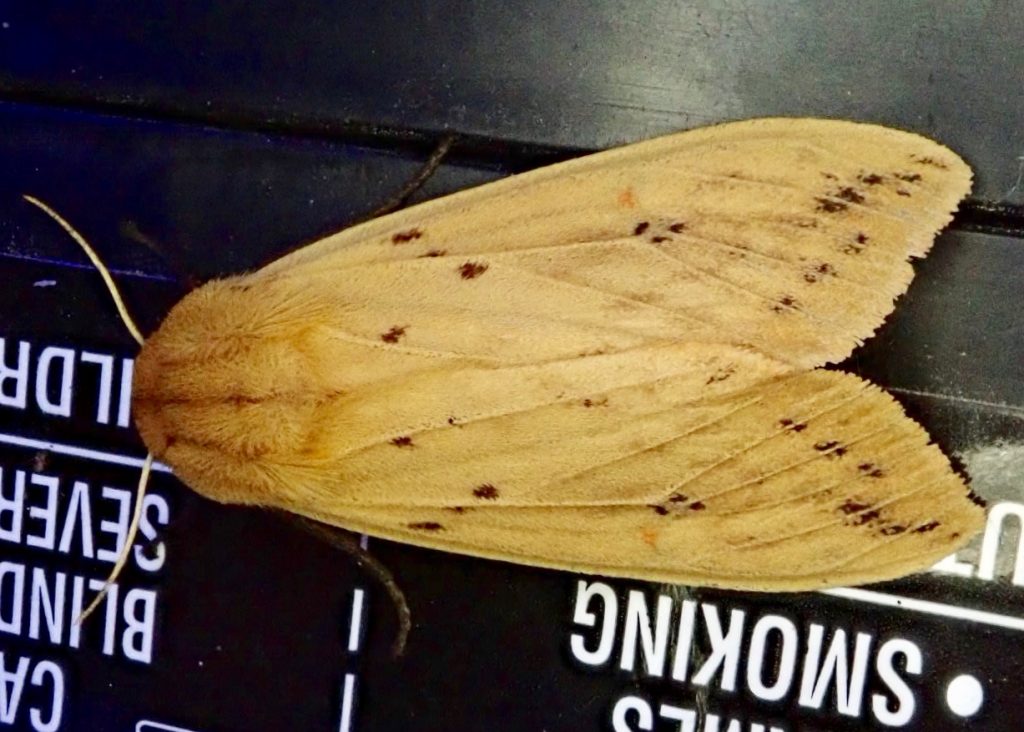
Reproduction-Univoltine in our region; overwinters as larvae in diapause, and pupates in spring.
Adults active-April into September, with the peak from mid May to mid July.
Etymology of names–Pyrrarctia is from the Greek for ‘flame colored’, plus the genus Arctia, which is from the Greek for ‘bear’, and refers to the wooly caterpillar; the specific epithet isabella appears to be a lady’s name, but which lady is unknown.
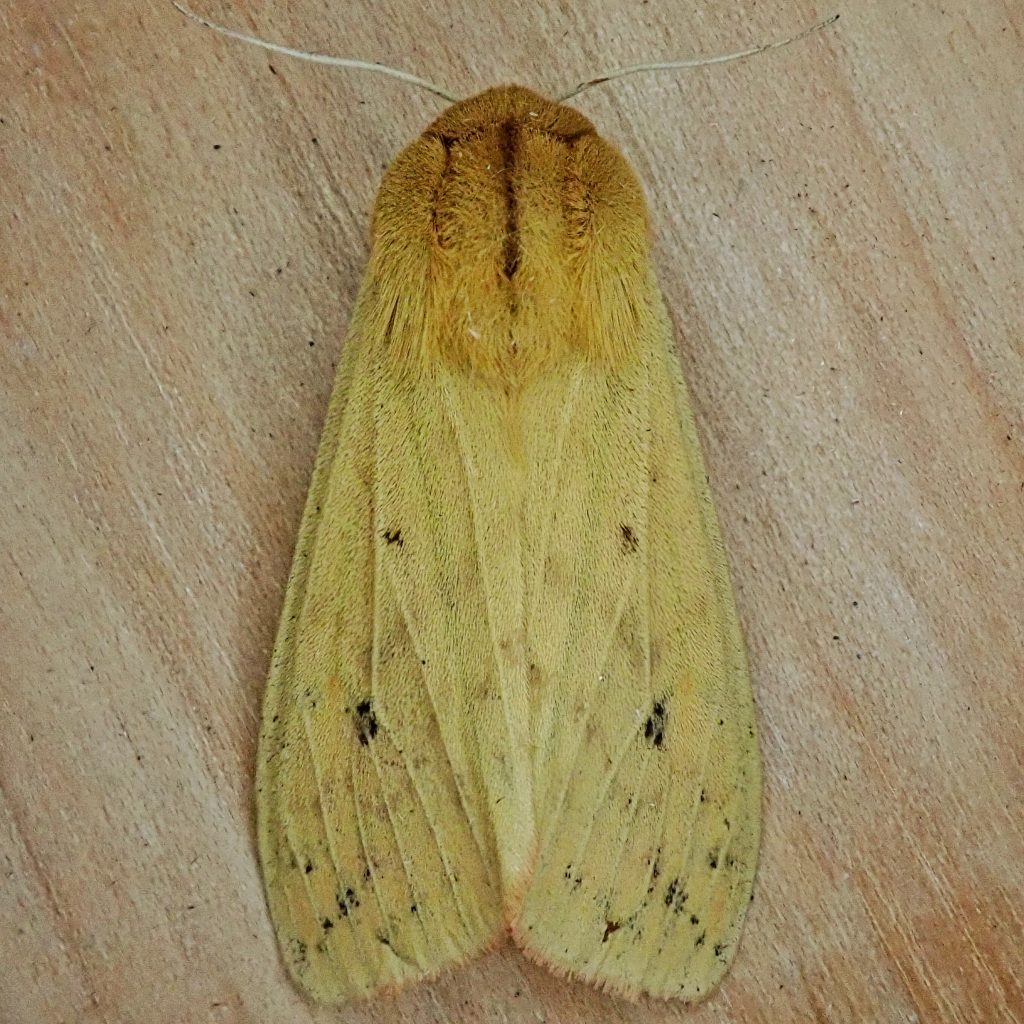
https://www.weather.gov/arx/woollybear
https://www.jstor.org/stable/2426919?seq=10#metadata_info_tab_contents
https://bugguide.net/node/view/539
http://mothphotographersgroup.msstate.edu/species.php?hodges=8129
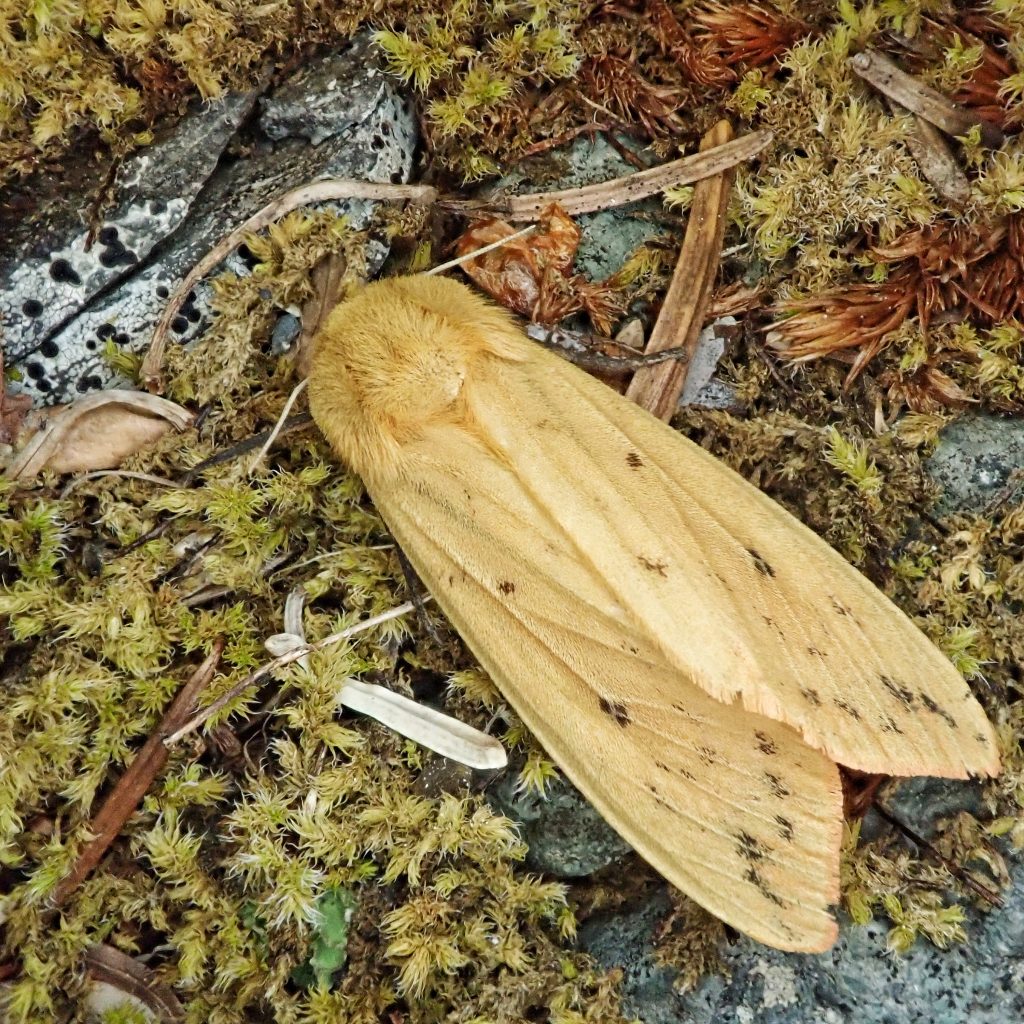
What a pretty little moth! Thank you ☺️
Cool. I dont see wooly bears anymore. This is wonderful to see the adult moth. Thank you.
Yes, they are one of the many bugs that I don’t seem to see nearly as many of them as I used to. Thank you for your appreciation!
Not to mention their fascinating abilities.
Thanks, Jerry!
Hi Dan, your website is impressive and inspiring in its breadth and depth! Thanks for the many thousands of hours that I imagine you’ve put into this.
Great article about these tiger moths… that parasitized larvae will ingest less palatable plants as anti-parasitoid medicine is fascinating! It makes me wonder about anti-parasitoidy behaviors other insects may use.
On a completely unrelated note, if you have time, would you be willing to contact me by email? My naturalist endeavors are primarily based in Montana, but next week I’ll be Seattle visiting friends, and I’d love to tap into your knowledge in terms of possible connections with local naturalists there. Also, if my travels ever happen to intersect with yours, or vice versa, I’d love to chat about whether we might do some sort of collaboration with field forays and/or writing! Thanks very much for your time – based on my experience with writing a blog, I imagine you’re inundated with emails.
Best wishes,
Shane
Thanks, Shane! I’ll do that